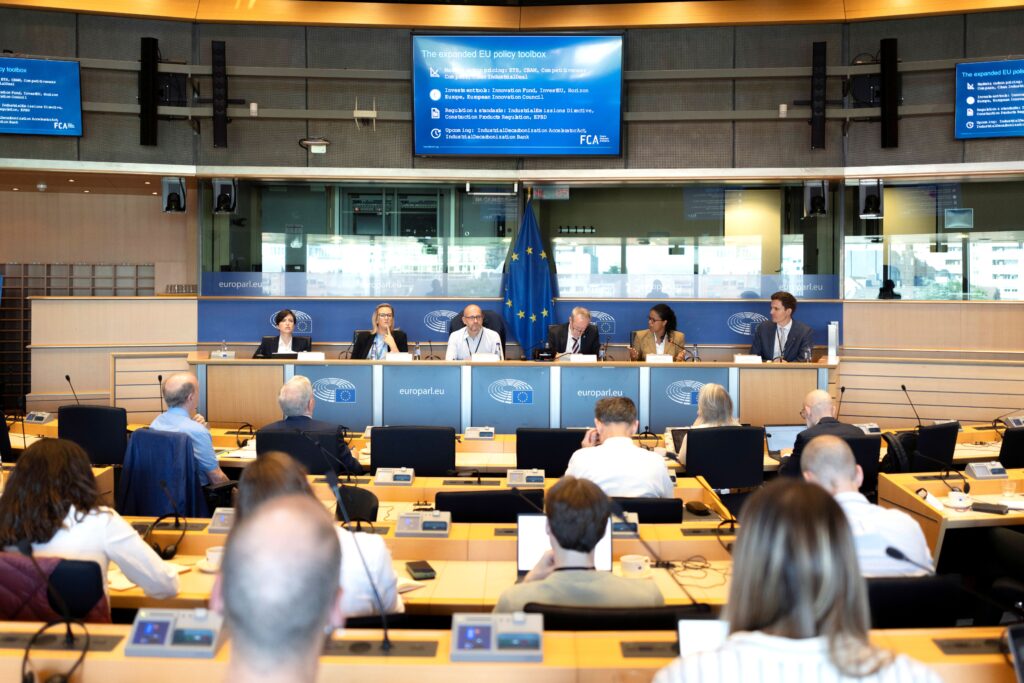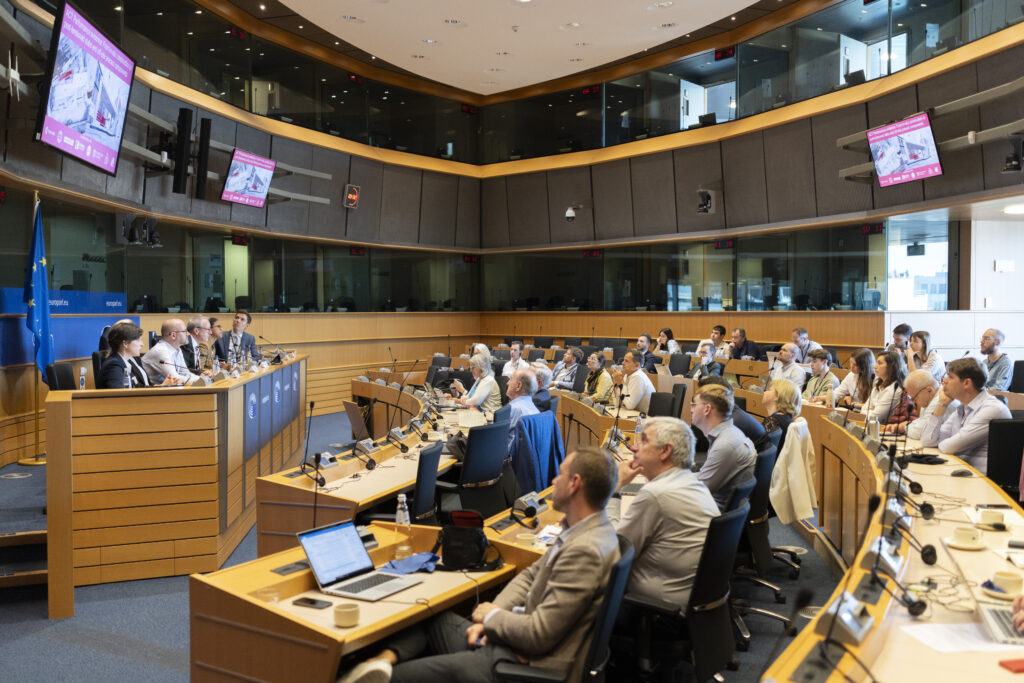Cement is the backbone of our living environment and infrastructure. It is the ‘glue’ that holds concrete together and, as such, is a critical part of almost all modern infrastructure. At the same time, the cement industry is responsible for 7-8% of global CO2 emissions and 4% of emissions within the EU.
On June 25, our Head of EU Policy, Marlène Siméon, joined a discussion hosted by EPP MEP Sean Kelly (Ireland) and MEP Radan Kanev (Bulgaria) on the policy pathways to get to the market. She joined brilliant panelists ECOCEM’s Susan McGarry, who presented existing low carbon cement solutions; Sisk’s Sarah-Jane Pisciotti, who shared insights into the confidence and innovation needed in contracting; and Sustainable Public Affairs’ Leon de Graaf, who moderated the event.
Here are our 3 key takeaways from the discussion:
1) Modernize our standards: Introduce performance-based standards that reward real outcomes, such as compressive strength and durability, rather than prescribing specific material content. This can help unlock innovation and allow low-carbon cement and concrete solutions that already exist today to reach and compete fairly on the market.
2) Procurement is power: The EU public sector buys close to 40% of all EU concrete. The EU can use that purchasing power to scale low-carbon solutions by including carbon intensity caps in award criteria, with clear, performance-based definitions, especially at the concrete level.
3) Finance must diversify: the Innovation Fund must go beyond CCS and diversify to support clean heat technologies, alternative chemistries, and new low-carbon materials. We need a full portfolio of low-carbon solutions, not a silver bullet.
Thank you to the active audience!
Learn more on how to decarbonize the cement and concrete sector in our recently published policy brief!





